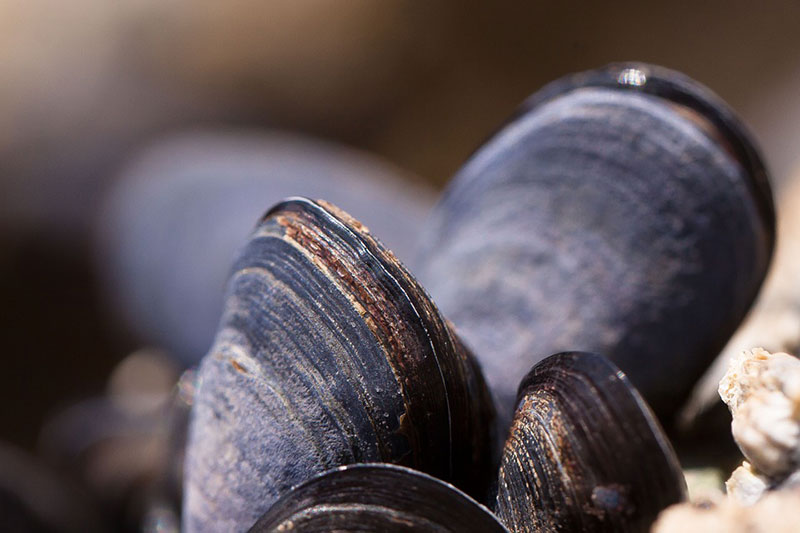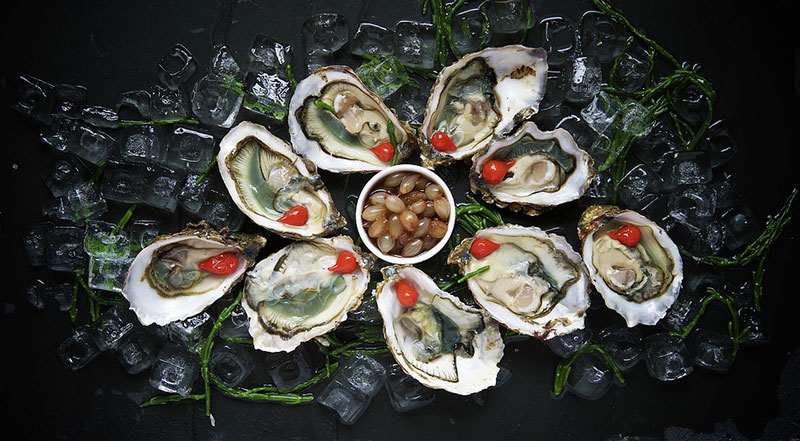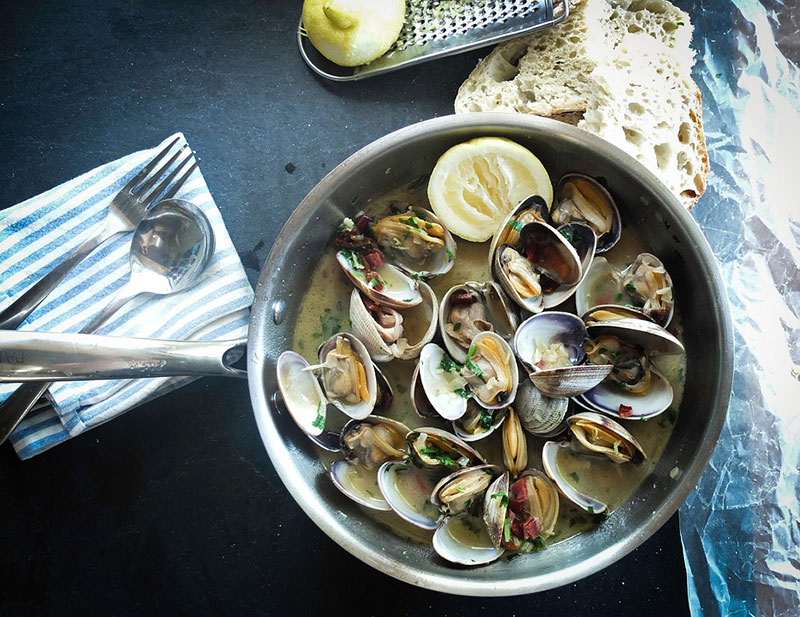Can you eat mussels raw?
Only a few years ago we would have answered the question "Can mussels be eaten raw?
"Can mussels be eaten raw? They're disgusting!"
Seafood and above all slimy, slimy mussels never had any temptation on us. Especially not as a delicacy.
Raw mussels as survival food?
The only situation in which we would have seriously considered this question would have been a survival tour. Shells, like snails, were not impractical as emergency animal food. They were easy to find and could be collected without the need for speed, skill or hunting experience. And yet: raw?
No, we would definitely have answered this question in the negative and we would still do so. Because in a survival situation you can't make many mistakes and the risk of catching fish poisoning on a raw shellfish is one that can definitely be easily ruled out.
The psyche eats with
Because one thing you have to consider especially in survival situations: The psyche is always with you. The mere fact that you eat raw, unknown goo here, where you can't be sure whether you can tolerate it, can make you feel sick. And diarrhea is definitely the last thing you need in a survival situation.
Hard to digest
There is another factor. As we were able to experience first-hand today, raw mussels are very heavy in the stomach. They are much more difficult to digest than cooked meat or fish. This means that eating raw mussels extracts energy from the body, which it later recovers by breaking down the food. However, if you are already weak and exhausted, this is extremely counterproductive.
It all depends on the preparation
Therefore, our tip is in a survival situation where you have mussels available: They are edible as long as they are found alive and processed quickly. But you should cook them over the fire in any case. This makes them more digestible and also safer than food. And for all those who are not used to eating mussels is also much more pleasant and less stressful for the psyche.
Are mussels poisonous?
One thing, however, must be considered: Now and then, even when the mussels are completely fresh, there are signs of poisoning. This is not due to the mussel flesh itself, but is a similar phenomenon to that found in edible snails with the green tuber leaf fungus. Mussels feed on algae. In most cases, this is completely harmless, as many algae on mussels are edible or at least harmless for us humans. However, there are a few species that produce so-called phycotoxins. They are harmless for the mussels, but if they are in the flesh of the mussel, it becomes poisonous for humans.
Pay attention to the environment
However, this only becomes dangerous if the algae species in question reproduce in large quantities, for example because there has previously been an imbalance in the water. In this case the water turns red in front of algae, but sometimes also brown or green. This means that before you start your mussel meal you should first look around to see if you find an excessive amount of algae in the water. If so: keep your hands off the mussels!
Another good indicator is seabirds and other animals that feed on shells. Because these also die from the algae poison when they eat the mussels. So if you see more suffering, dying or dead birds or fish in the vicinity, you should also avoid the shells.
The effect of the phycotoxins is not to be trifled with. They range from vomiting and diarrhea to changes in consciousness, loss of memory and nervous breakdown to complete respiratory paralysis and the resulting death.
But how do we even get to this topic?
Mussels as a speciality
Now that we have arrived in the heart of Calabria, today we were embarrassed to taste our first raw mussels. Calabria is a region where people call seafood "fish" in a meaningless and generalized way and love it above all else. It is available with pasta, as an appetizer, in salads, in rolls and even on pizza. Punctuality, reliability, functionality and organisation are largely foreign words here, which are only known from hearsay and are usually smiled at. On the other hand, people love the sea, the beach, loud party music, sweets, wine and seafood. So every region has its peculiarities.
Anyway, today we went with the priest, who invited us to his house to eat in a restaurant at the coast.
Typical Calabria
At first, we enjoyed the unstructuredness and the party music. Even though the restaurant was only about three quarters full, we had to wait a good half hour away from the dining tables in a kind of lounge. After all, we did not want to over strain the waiters and cooks or disturb them during their cigarette breaks and chatting.
The next thing we did was to enjoy the culinary pleasure. For drinking there was water (for which we were very grateful in this heat) and coke. There were no juices or sugar-free drinks. Apart from beer maybe.
We ordered one pizza each and the priest added an antipasti to each order, consisting of "raw fish", as he said.
"Do you like raw fish?" he asked briefly.
"Yes," we replied nodding, thinking of sushi.
Of course, what came next was not sushi. Why should it be?
Other countries, other customs
It was a bowl of raw shrimps that bathed in a sauce of lemon and salt, and for each one a plate of different mussels. Some of them were mussels, which we already knew from numerous mussel-pasta dishes. Ironically, they were called "Cozze" in Italian, which is actually pronounced like "vomit". But until now we only knew them cooked. Raw they were much bigger and more slippery.
There were also pink mussels on the plate, which we didn't know yet, and some oyster shells. All had been bathed in lemon. In Norway, we had already heard about this technique, which is used there with salmon. The citric acid destroys the molecular structure of proteins in a similar way to heat. As a result, lemon can be used to cook fish and mussels cold, so to speak.
Cold cooking with lemon
Once again briefly back to our Survival friends: So if you have a lemon but no fire with you in an emergency situation and you also have a strong stomach, then this can also be a solution.
In films where gals and receptions are shown by rich people, where oysters are a special delicacy, it always looks so easy. You put the shell to your mouth, make a short sipping sound and the oyster is gone. In reality, however, it is far from easy. Because even when the mussel is dead, it still hangs on its shell.
How to eat mussels properly?
Our priest solved the problem very skillfully with a skillful swing of the fork. I tried the same and solved nothing at all. The fork slipped through the shell as if it were pure slime. Which, after all, it was.
So I tried the method I knew from the movies and simply sucked the flubber in with my mouth. It went pretty well so far. Just to the point where it got stuck at the connection with its shell. The only solution I could think of was to scrape the shell off with my teeth. That worked quite well with the mussels. With the pink ones it was much more difficult, and with the oysters you automatically scratched with your teeth along the underside of the shell, which gave you some lime crumbs in your mouth.
Heiko, on the other hand, opted for a much more brute method. He grabbed the shell with his thumb and index finger and ripped it out of its protective housing.
At least as far as the oysters were concerned, we later even found instructions on how to solve the matter elegantly:
Matter of taste
The advantage of eating the mussels raw and not cooked was, according to our priest, that they tasted more like sea. However, our taste buds could not recognize this advantage. The whole thing tasted refreshingly like lemon, which was great so far. But it also had this typical aroma that one knows from ports.
So after a mixture of salt water and decaying fish. The slogan of the day: You obviously get used to everything. Stage for the 1st day: Distance: 22 km; difference in altitude: 60 m; finish: vicarage, Mirto Italy Stage 2: Distance: 125 km; difference in altitude: 160 m; finish: vicarage, Cariati, Italy Stage 3: Distance: 19L km; Altimeter: 66 m; finish: vicarage, Ciró Marina, Italy Stage 4: Distance: 45 km; Altimeter: 140 m; finish: camp site in a field in the middle of the village, Crotone, Italy Stage 5: Distance: 15 km; difference in altitude: 60 m; finish: Caritas station in the municipality of San Domenico, Crotone Italy











